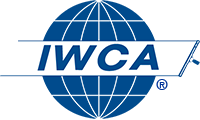October 19, 2015
IWCA Glass Committee
Paul West
The Glass Committee is pleased to announce a milestone in the IWCA/GANA relationship. After almost two year of waiting, the revised Glass Informational Bulletin 01-300 “Proper Procedures for Cleaning Architectural Glass Products” will go before the Tempering Division for vote of approval.
The updated Bulletin contains many beneficial updates which will be of use to professional window cleaning contractors. Please enjoy reading some of the new content which is included in this new joint IWCA/GANA cleaning document. Below in bold and quotations will highlight some of the specific wording changes included in the new document.
1) The use of pure water and water fed poles will be officially recognized.
“The International Window Cleaning Association (IWCA) recognizes an additional glass cleaning technique being utilized by some professional window cleaning contractors. This technique employs the use of pure water delivered to the glass surface using a specialized extension pole. Gentle agitation with a non-scratching (non-abrasive) brush is followed by the final pure water rinse. Rinse water is generally allowed to evaporate from freshly cleaned surfaces. Therefore, the pure water used in both the wash and rinse must have a total dissolved solids content (TDS) of 20 parts per million (PPM) or less to prevent spotting and streaking of cleansed surfaces. The use of tap water is not acceptable. Effective water treatment, via ion exchange and/or reverse osmosis equipment, should be used in conjunction with delivery & rinse methods at all times.”
2) Glass being properly protected is emphasized to general contractors and builders.
“During all stages of construction the glass must be properlyprotected from construction debris such as cement, paint, varnish, adhesives and other construction material commonly found on job sites.”
3) Multiple cleanings are suggested on certain construction sites.
“Extended construction schedules may create the need for multiple cleanings to avoid the accumulation of significant amounts of soil and debris, and to avoid potential damage.”
4) The use of cleaning methods to clean/restore glass left unprotected is discussed including the use of razor blades.
“Glass that is improperly stored or left unprotected during construction may result in glass that cannot be successfully cleaned using routine cleaning procedures. In such situations, more aggressive cleaning and restoration techniques may become necessary, such as the use of razor blades, chemical cleaning and/or mechanical polishing. Glass surface conditions that may require more aggressive cleaning techniques would include, but not be limited to, the accumulation of paint, stain or varnish overspray; mortar, concrete or cement splashing on glass; silicone sealants and/or lubricants being smeared or sprayed onto glass and frames; and sealer overspray or run-off from adjacent masonry or stone waterproofing operations.”
5) A regular schedule of maintenance is discussed, and twice per year or more cleanings are suggested.
“It is important to be aware of conditions that can lead to glass damage, to follow the handling and cleaning guidelines provided by GANA/IWCA and the glass fabricator, and to adhere to a regular schedule of maintenance cleaning. Generally, twice per year cleaning is sufficient; however, specific regions may require more frequent cleaning due to environmental factors and atmospheric pollutants. Contact a professional window cleaner, such as members of the IWCA, to discuss recommended frequencies for your particular building.”
6) The use of IWCA members as professional window cleaners is mentioned.
“Contact a professional window cleaner proficient in construction window cleaning, such as a member of the IWCA for the most appropriate solution.”
7) Our website www.iwca.org will assist readers in additional technical resources and help locate window cleaners in their region.
“Consult either the GANA website (www.glasswebsite.com) or the IWCA website (www.iwca.org) for additional information and links providing additional technical resources.”
As always, it is our goal to continue building bridges between our two industries – the glass manufacturing industry and the window cleaning industry. Real world cleaning guidelines have now been developed and will very soon become a reality. This is a huge step forward for window cleaners!
Any additional questions or comments can be directed to IWCA Glass Committee Chair, Paul West at 808.885.7600 or KohalaPaul@gmail.com.


